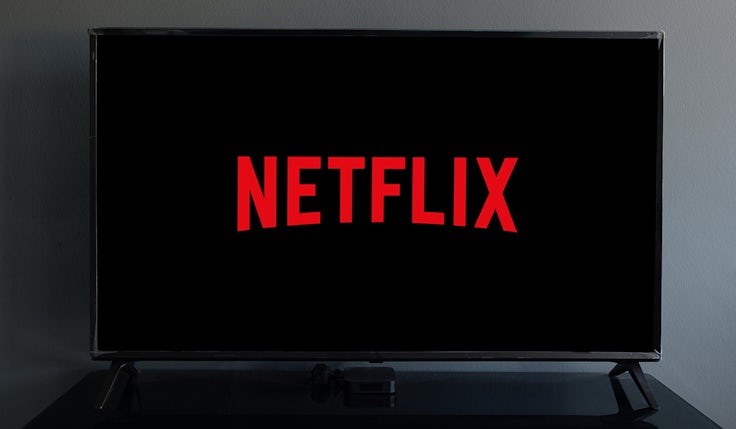Professionalism, small businesses, ad-supported streaming: 5 interesting stats to start your week
We arm you with all the numbers you need to tackle the week ahead.
One in 10 business decision-makers believe their marketing colleagues act unprofessionally
Business decision makers are almost three times as likely to perceive their marketing colleagues as behaving unprofessionally as they are to say the same about finance.
Around one in 10 business decision-makers believe their marketing colleagues act unprofessionally. These concerns are most prominent among leaders of small businesses, with around a fifth (18%) ranking marketing as the least professional function.
Ongoing professional development and training was seen as a way to remedy a perceived lack of professionalism, with almost two-thirds (63%) recognising its value. Over one in five (22%) respondents see external qualifications or certifications as another way of improving professionalism across all business functions.
Marketing teams themselves believe that a lack of professionalism in their own teams can bring about reduced moral (45%) and poor campaign outcomes (39%).
Source: Chartered Institute of Marketing
Marketing and brand visibility top priority for seven in 10 small businesses
 Marketing and brand visibility are top priorities for small business owners aiming to grow in 2025, with almost three-quarters (71%) focusing on these areas.
Marketing and brand visibility are top priorities for small business owners aiming to grow in 2025, with almost three-quarters (71%) focusing on these areas.
The research, conducted by Small Business Britain, also finds 61% of small business owners are looking toward sales and customer acquisition to fuel growth this year.
Meanwhile, almost half (49%) believe social media and content creation will also be a lever for growth this year.
Source: Small Business Britain
Over a third of new streaming subscribers opt for paid ad-supported model
 More than a third (35%) of new video-on-demand subscribers opted to go for paid, ad-supported models in the last quarter of 2024, according to data from Kantar.
More than a third (35%) of new video-on-demand subscribers opted to go for paid, ad-supported models in the last quarter of 2024, according to data from Kantar.
This marks a notable uptick from the same period in 2023, when just 21% of new subscribers opted to sign up to this type of model.
Over two in five (43%) subscribers on paid ad-supported tiers report satisfaction with the value for money they are receiving, a figure that exceeds satisfaction among ad-free subscribers. Indeed, less than one in four (23%) video-on-demand subscribing households oppose seeing ads.
For Netflix specifically, two in three new subscribers opted for the ad-supported tier.
In the UK, Disney+ was the biggest winner in terms of acquiring new paid video-on-demand subscribers in the last three months of 2024. Prime Video saw the second biggest gains in the quarter, followed by Apple TV+.
Source: Kantar
British public believe brands should be banned from using unhealthily thin models
 Almost three-quarters (72%) of the British public believe ads should not be allowed to feature models who are unhealthily thin, according to research from YouGov.
Almost three-quarters (72%) of the British public believe ads should not be allowed to feature models who are unhealthily thin, according to research from YouGov.
The research comes after the Advertising Standards Authority (ASA) banned an ad from fashion retailer Next, suggesting it had breached the code for social responsibility by featuring a model who appeared unhealthily thin.
Just 13% of the general public believe ads should be allowed to feature models who appear unhealthily thin. However, among 18- to 24-year-olds the figure rises to over a quarter (27%). Men (18%) are also more likely than women (8%) to believe that brands should be allowed to use these models in their advertising.
Source: YouGov
Global podcast ad revenue forecast to exceed $5bn in 2025
 Global podcast ad spend is forecast to exceed $5bn (£3.97bn) this year, according to Warc Media. This would represent a 7.9% increase in podcast ad revenue versus 2024 levels.
Global podcast ad spend is forecast to exceed $5bn (£3.97bn) this year, according to Warc Media. This would represent a 7.9% increase in podcast ad revenue versus 2024 levels.
The total global audience reach of podcasts has increased from 60.6% in 2020 to 66% in 2025.
By 2026, podcasts are projected to bring in $5.5bn (£4.46bn) in global revenue, representing 6.5% growth versus the previous year. The projected year-on-year growth in 2025 and 2026 marks a slowdown from 2024 when revenue grew 13.2% year-on-year.
The projected rate of growth in 2025 is also slower than other emerging channels, including retail media (14.8%), connected TV (15.4%) and even digital out-of-home (14.9%).
Source: Warc Media








